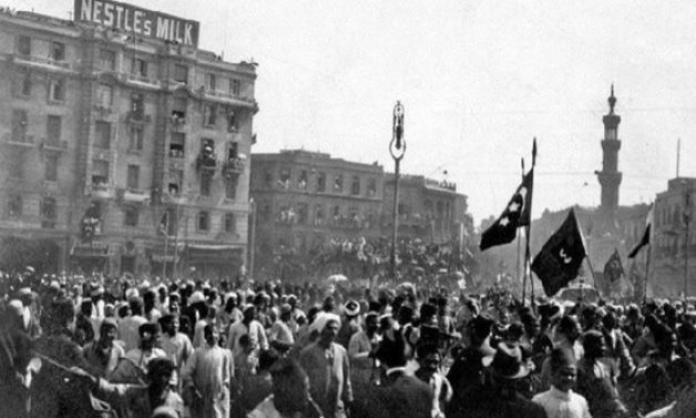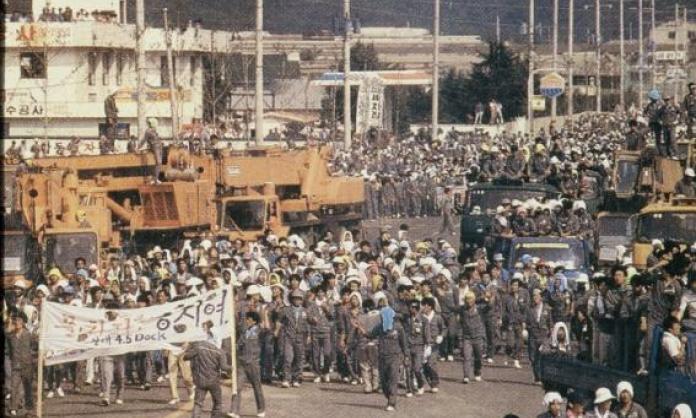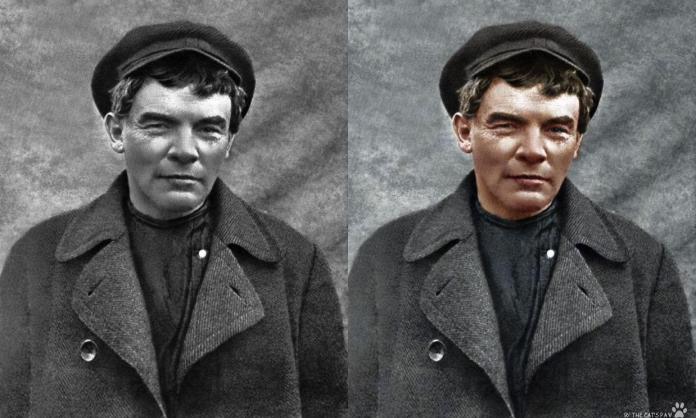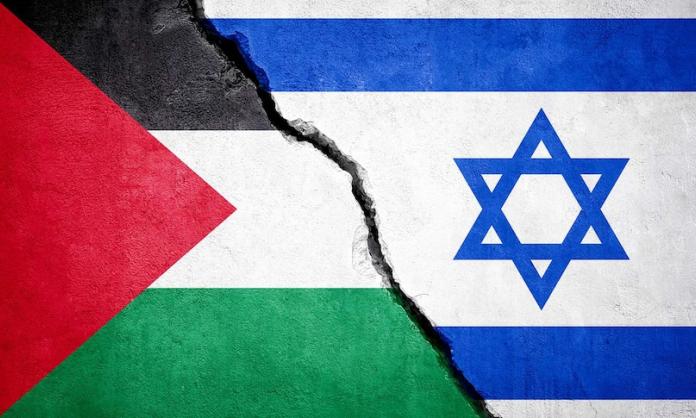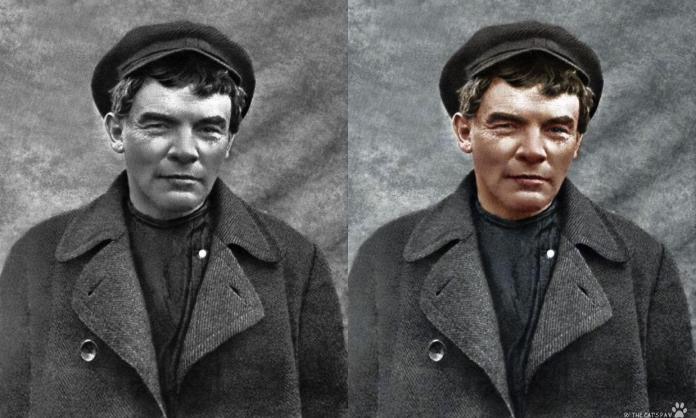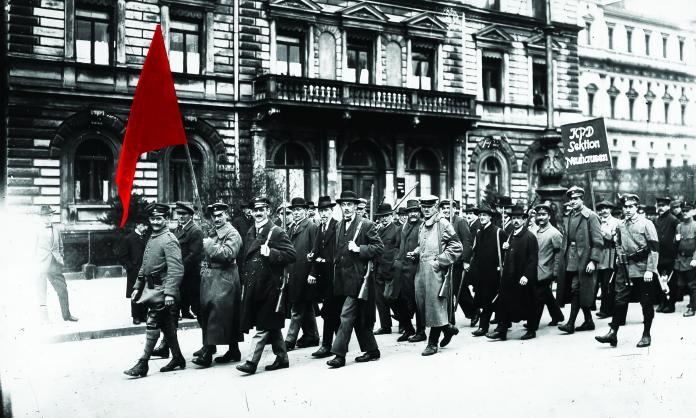For 350 years, Dutch colonialism oversaw a system of brutal exploitation and repression in Indonesia. But in 1945, a mass movement defeated the colonial regime, despite the imprisonment, torture and execution of thousands of independence activists.
The Netherlands East Indies were one of Europe’s most valuable colonial possessions, and the Dutch were determined to hold onto them at any cost, including waging war on the newly declared republic.
Defeating the Dutch would take a relentless struggle by the Indonesian population. They found allies in a group which has often been written off as too racist to support any fight against oppression—the Australian working class. Between 1945 and 1949, maritime workers and their allies stopped more than 500 vessels carrying supplies for a Dutch offensive in Indonesia from leaving Australian shores. In the process, they stood up to attempts by their employers, the Dutch and conservative civil society to crush their campaign, and the Labor government’s attempts to undermine them. Much of this history of anti-imperialist working-class solidarity would be lost if not for the writings of Rupert Lockwood, a Communist Party journalist who documented the campaign in his retrospective account, Black Armada, upon which this article draws.
When fighting broke out in the Pacific during World War Two, the Dutch were not sufficiently prepared to defend their colony. In 1942, Japanese forces swept through Indonesia, and the Dutch surrendered unconditionally. Colonial administrators fled to Australia, where they were welcomed by the Labor government. They were confident that they would retake Indonesia after the war, and Attorney General and External Affairs Minister Doc Evatt reassured them in 1943 that “Australia will become a base from which the Dutch colonies will be finally regained”.
But the Dutch unwittingly brought with them the force that would eventually help stifle the recolonisation effort. Up to 10,000 Indonesians arrived in Australia during the war, half of whom were merchant seamen working on the Royal Netherlands Packet Line. They were mutinous from early on. Expected to cross mine-strewn and bomber-patrolled seas in accommodation far worse than that of Australian and Dutch workers (and for less than 10 percent of the pay), Indonesian seamen were on strike within a month. In Dutch eyes, the strikers were mutinying against the Allied war effort. The Australian government agreed, branding them illegal immigrants and sentencing them to six months’ jail.
The anger of Indonesian workers and soldiers about their appalling treatment was compounded by the growing confidence of the old colonial rulers that their return to Indonesia was imminent. When Indonesian independence was proclaimed on 17 August 1945, activists rapidly set up Independence Committees around Australia and released a manifesto calling for open defiance of the Dutch, who tried to smash the republic.
By this point, thousands of Indonesian workers and army personnel were scattered along Australia’s eastern seaboard. They worked in shipping, heavy industry, the Dutch military and Australian work camps. Indonesians were vital to the Dutch administration’s functioning, operated the majority of Dutch ships sailing from Australia and played a crucial part in the armed forces. Thrown into this mix were hundreds of former political prisoners, many of whom were communists, exiled by the Dutch before the war for their involvement in anti-colonial struggles and then brought to Australia to prevent them from spreading their ideas at home.
These activists helped set up the Indonesian Seamen’s Union. Its members, monitoring every signal coming out of Indonesia, were among the first to hear the news about independence. One of them raced across Sydney to the offices of the Seamen’s Union of Australia to call for support. Having already taken up Indonesian demands for better conditions on the waterfront, they were quick to express solidarity, which rapidly spread to other unions. Within days, the Waterside Workers Federation began putting out circulars detailing which ships were to be avoided. “To assist the Dutch in any way”, they read, “is to assist avaricious Dutch imperialism against Indonesian democracy”.
Similar developments were taking place in other cities. To get the Van Heutz—one of the first ships placed under the ban in Brisbane—out of the harbour, the crew had to be taken as prisoners. Without tugs to tow her down the Brisbane River, and lacking fuel, she limped away from the docks to the sounds of a demonstration of Indonesian and Australian workers. When she reached Bowen, having taken a week instead of the usual 72 hours, a Dutch ship already at sea had to return to Australia to provide her with fuel.
From the outset, Labor stepped in to quash the emerging solidarity movement. The Stevedoring Industry Commission, the Chifley government’s waterfront labour control body, was instructed to put a crucial ship carrying Dutch administrative personnel first on the list to be loaded. When workers refused, the commission stopped offering other jobs, essentially threatening to starve wharfies into submission by denying them work until they serviced Dutch vessels. But these were workers educated in traditions of solidarity. They held strong, and 1,400 of them went without pay for the day.
The Communist Party played a leading role in this fight for independence. It had a significant presence in the waterfront unions and a history of connecting workers’ struggles with struggles against oppression. But the Communist Party was by this point a Stalinist party, and this put limits on the positive role it could play.
CPA support for the dictatorship in Russia meant arguing that workers and the oppressed had to throw their lot in behind the Allies once Russia joined them in 1941—even though this meant opposing workers’ struggles when they got in the way of the war effort. It also meant subordinating anti-colonial struggles to the Allied cause, even though the vast majority of the 750 million people under colonial rule at the time lived in countries held by the Allies. Unwilling to accept what Rupert Lockwood describes as a common attitude among Indonesians, that “the war was a purposeless clash of empires, after which they would be asked to accept the familiar currency of authoritarian direction”, the Communist Party called for collaboration with the Dutch during the war. Jan Lingard, a lecturer in Indonesian studies, recounts in Refugees and Rebels that they praised the leader of the Indonesian Communist Party, Sardjono, who donned a Dutch uniform and joined the colonial propaganda agency to convince others to join the Dutch army.
Once the Japanese surrendered, however, and war in the Pacific came to an end, pressure mounted to support the Indonesian republic. The Communist Party swung behind the struggle to end colonial rule and began to wage arguments in the unions. The resulting “black bans” imposed on Dutch ships helped to cripple the Dutch invasion. Merchant ships, passenger liners, troopships, oil tankers, submarines and barges waited without service or repair in Australian docks, unable to be loaded, and without Indonesian crews. This support wasn’t just symbolic. Vital shipments of troops, supplies and key administrators remained stuck in Australia, which allowed the new republic to start consolidating itself.
This took place, remarkably, in the time of the White Australia Policy, and the bans were met with open hostility by the media and political establishment. The Sydney Morning Herald painted the Indonesian activists as Japanese agents and declared: “Only mischief can result from the blundering attempt by the Waterside Workers in Sydney to prevent the shipment of supplies by Dutch vessels”. Support amongst the population for a total end to colonial rule was below 30 percent in 1945, according to Australian Gallup polls. But even before the independence campaign, Indonesians living in Australia had started to form ties with local workers.
Workers were far more likely to support a free Indonesia than any other section of the population. The people attacking Indonesian independence—the bosses, the politicians and the press—were those who went after workers most rabidly, and who the unions had a tradition of standing up to. Rather than being blinded by the racist political mainstream of the day, Australian workers united not just with Indonesians, but also with Indian, Vietnamese, Chinese, Malaysian and Melanesian workers, who also joined the solidarity movement.
The strength of the black bans forced concessions from the Australian government. Rather than getting away with sending Indonesians home on Dutch vessels, for example, the first Indonesians returned to the newly proclaimed republic on an Australian ship. More than 1,000 seamen and rebel soldiers packed on board the Esperance Bay. They were farewelled by a crowd of their supporters, calling out “Merdeka!”, meaning freedom in Indonesian, and “Down with the Dutch!”.
They returned to a country wracked by a bloody war. Lockwood notes that when they arrived, according to one passenger, Dutch soldiers were “wandering around fully armed, holding up all red-and-white flagged cars, shooting at innocent, unarmed Indonesian men, women and children”. The Dutch, unwilling to let go of their former colonial crown jewel, continued to wage war on Indonesia until it became clear in 1949 that defeat was unavoidable. Sovereignty was transferred, except for West Papua, to the Republic of the United States of Indonesia, consisting of the Republic of Indonesia and various Dutch-sponsored states. This wasn’t yet total independence for Indonesia, but it was an enormous victory and was followed less than a year later by creation of a single united Republic of Indonesia.
The shifting attitude of the Labor Party had nothing to do with supporting freedom for the people of Indonesia. It was a calculation about what would best serve Australian imperialist interests by ensuring stability in the region and expanding Australian influence. Even when it opened lines of communication with the new Indonesian government, Labor continued to undermine support for independence by supplying arms to the Dutch.
In contrast, workers during the black ban campaign showed unrelenting solidarity with the independence movement. Their actions didn’t go unnoticed in Indonesia—across Java, notices were pasted up reporting the Australian boycotts. It’s this spirit of solidarity that connects workers across the world, who have no interest in exploitation or repression, and allows them to fight together, to share in struggles against oppression, and to shake this unjust system to its rotten core.




